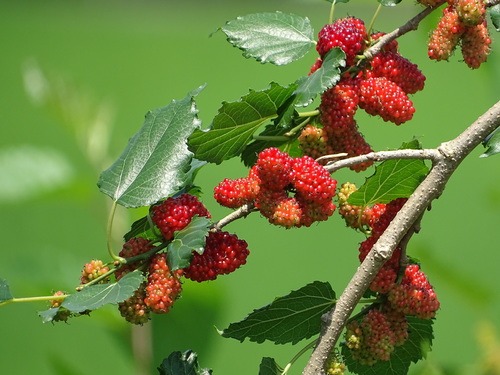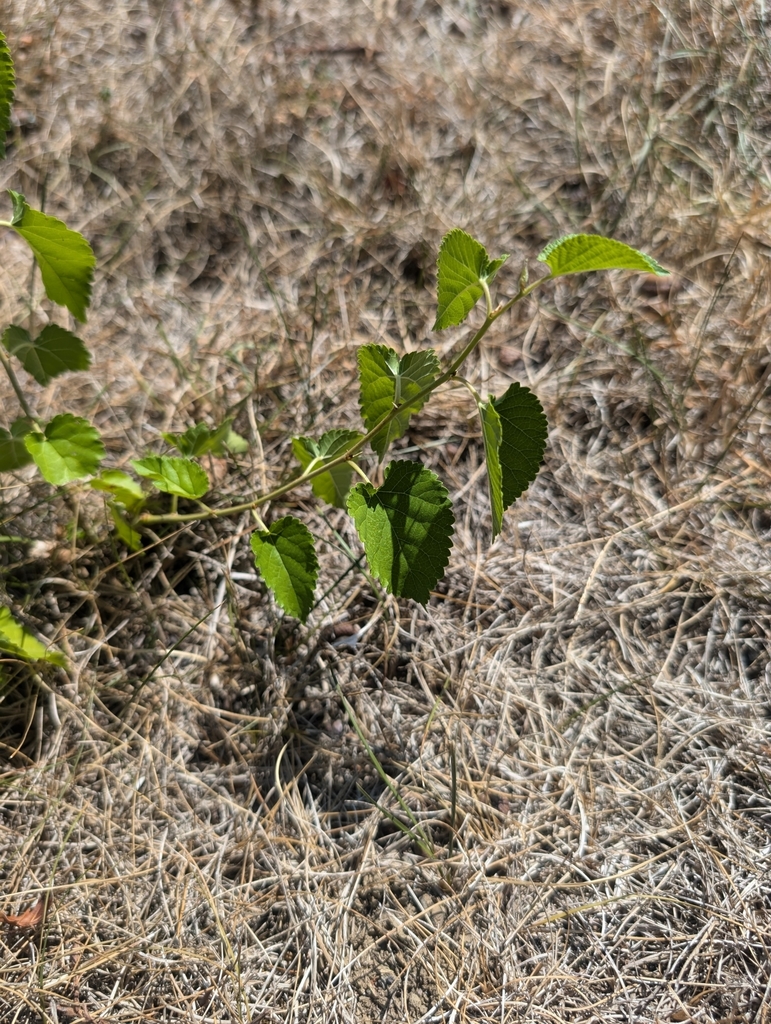|
| Common Animals Fish Mushrooms Flora |
Morus alba |
June: Berries ripen actively, harvest begins.
In eastern traditions mulberry valued as food source and medicinal plant Leaves used as feed for silkworms in sericulture
Deciduous tree with broad leaves Berries white or pink, ripen early summer
Grows in parks, gardens, and sunny slopes Berries are hand-picked in June–July
Berries bruise easily — pick carefully Best picking time is dry morning
Berries suitable for fresh eating, drying, and jam making Store in fridge for no more than a few days
Berry: White or light pink, sweet
Leaves: Used for tea and silkworm feed
Leaves: Used for tea and silkworm feed
Eastern Mulberry Jam (Boiling)
Sweet jam with delicate aroma
Sweet jam with delicate aroma
1. Wash berries, remove stems.
2. Mix with sugar (1:1), let sit 2 hours.
3. Cook on low heat for 20 minutes, jar.
2. Mix with sugar (1:1), let sit 2 hours.
3. Cook on low heat for 20 minutes, jar.
Eastern Mulberry Juice (Pressing)
Natural sweet juice
Natural sweet juice
1. Press juice from fresh berries.
2. Strain and bottle.
3. Store refrigerated, consume quickly.
2. Strain and bottle.
3. Store refrigerated, consume quickly.
Eastern Mulberry Compote (Boiling)
Refreshing drink with mild sweetness
Refreshing drink with mild sweetness
1. Wash berries and put in pot.
2. Add water and sugar to taste.
3. Boil 10 minutes, cool, serve.
2. Add water and sugar to taste.
3. Boil 10 minutes, cool, serve.
Eastern Mulberry Leaf Tea (Infusion)
Healthy and aromatic herbal drink
Healthy and aromatic herbal drink
1. Brew dried leaves in boiling water 5-7 min.
2. Strain and drink warm.
2. Strain and drink warm.
 United States · Ohio · Franklin
United States · Ohio · Franklin




